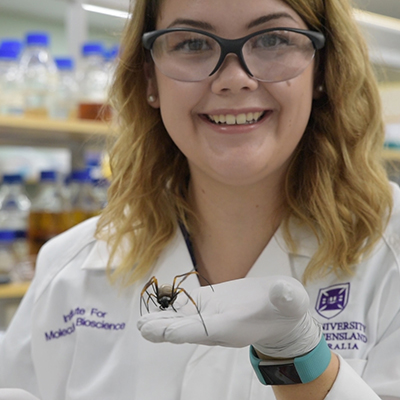UPDATE: Thanks for your generosity, we have gathered enough spiders for our research.
If you have spiders you’d like identified, please contact the Queensland Museum.
The Institute for Molecular Bioscience has put the call out - we want your spiders!
IMB's "Spider-Woman" Samantha Nixon is searching for arachnids to replenish the live spider collection for IMB venom research, finding new medicines for the three 'terrors' of neurological disease: stroke, epilepsy, and chronic pain.
"Venoms are a complex cocktail of molecules which have evolved over millions of years, and at the venom lab at IMB we have isolated molecules that have the potential to make new medicines and new technologies," Ms Nixon said.

However, seven spiders from the University of Queensland's venom laboratory died last year. They were being milked for their venom to not only create treatments but also anti-parastic medicines which would benefit the sheep industry.
"Spiders can live for a really long time — some tarantulas can live for 25 years — and unfortunately in the last year or so a lot of our spiders reached the end of their lives, whch was very sad for me as I'd looked after them for more than five years" Ms Nixon said.
A former arachnophobe, Ms Nixon says she got over her fears by embracing the benefits of spider venom. Naming the spiders also helps.
"At the moment, we have Marise, a Victorian tarantula in the lab, and Big Bessy, a golden orb-weaver which just gave birth," she said.
"We have kept tarantulas in the past because they are big and produce more venom - less than 0.5% per cent of 50,000 species of spiders are dangerous to people, but you still need to be careful."
If you have a spider which may benefit venom research, please don't head out with your bug catcher - send a photo to the IMB Venom team, and they can advise if it could be part of their collection.
IMB Media - communications@imb.uq.edu.au



